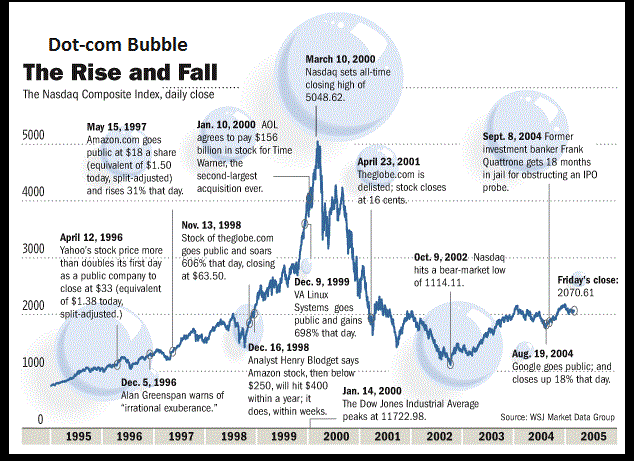WHAT’S THE NEXT BITCOIN?
People want to know. Is it Ethereum? is it Litecoin? Is it some new ICO? They want to know what the next Bitcoin will be. They want to jump in early for once. Hop on a rocketship still fueling at the station -- not one that’s already halfway to the moon.

After all 1 bitcoin used to cost less than an off-brand candy bar. Now 1 bitcoin costs more than a luxury SUV -- with some people speculating it’ll buy them a yacht some day.
Wouldn’t it be grand to find the next Bitcoin -- buy wheelbarrows of it -- and then someday own a whole marina of yachts? Call me Admiral Money. I’m LivingTheDream.
Is this possible? Let’s take a look.
ICO
An ICO is an Initial Coin Offering. It’s similar to an IPO -- an Initial Public Offering. Both are methods used by companies to raise money. The difference is that IPO’s began a couple hundred years ago and essentially gave birth to the stock market. Due to this they’ve gone through growing pains and matured. Their wild party filled youth is behind them. These days IPOs are highly regulated, require mountains of paperwork, cost cosmic sums to undertake, and running them requires teams of intelligent people fueled by barrels of coffee.
On the other hand we have ICOs -- which started in 2013. No regulations exist. Paperwork is sparse. They cost pennies to set up and you could launch your own ICO before finishing your first cup of coffee. It’s the Wild West out there. Scams, hacks, and general bank robbing abound. This begs the question ... Why are people buying into ICOs?
Take a moment and step into my time machine. Let’s visit 1994.
The early 1990’s were a nostalgic bunch of years. It was the last decade to see stamp collectors, door to door dictionary salesmen, and car glove-boxes full of maps. 1994 saw the adoption of the first internet browsers -- and information would never be the same.
The internet asked us to think about information differently. The internet said:
“Don’t open that heavy dictionary. Google it.”
“Don’t mail a letter that might get lost. Email it.”
“Don’t dig out your confusing AAA maps. Use your GPS.”
Soon, in a couple years, computers had gone from an unusual curiosity for ‘nerds, geeks, and dweebs” to a daily necessity for the average Joe and Fortune 500 companies alike. This technological revolution brought about Dot-com’s -- companies that existed mostly “online.” Many didn’t have physical assets, tangible products, or were even making money -- yet as soon as they launched an IPO their stocks sold out in minutes. People were rolling wheelbarrows of cash away -- especially between 1997 and 1999.

Now we step out of our time machine back into present day. We see similarities. We understand that what the internet did for information — Bitcoin and the blockchain are doing for finance.
Bitcoin is transitioning from an unusual curiosity for ‘nerds, anarchists, and money launderers’ to a financial tool for people and businesses around the world.
This financial revolution is creating blockchain companies that also exist mostly online. They likewise tend not to have physical assets, tangible products, or make much money. Yet as soon as they launch an ICO their coins sell out in minutes. And people do indeed seem to be rolling away wheelbarrow-breaking amounts of cash. But what are these ICOs creating that’s so valuable?
ETHEREUM AND ALT COINS
Ethereum is a rather big name these days. 1 ETH is worth the price of a new laptop -- and rising. But back in 2014 -- when Ethereum launched its ICO -- 1 ETH cost a mere 0.35 cents. This story repeats itself -- to varying degrees of success or failure -- across all Alt Coins.
Alt Coins are ‘Alternative Coins.’ Such is the term for all coins that are not Bitcoin. And there are plenty -- over 5,000 and counting. Some, like Pizzacoin and Dogecoin, were created for a laugh. Others take themselves far more seriously. Let’s take a look at a random handful.
Storj, Filecoin, and other decentralized data storage coins
Who do you trust with your family pictures? Before computers you would trust your great Aunt Jemima with the family album. She would lovingly place each family photo in an album trimmed with lace. But what if a fire burned down the attic or water flooded the basement?
Family pics then moved to CD’s and DVD’s. These could be easily copied and shared, thousands of pictures could be mailed out, and the dics were kept in a fireproof box. But what if the disks got scratched or lost?
These days our favorite snaps are uploaded to the cloud. Amazon or Google or Dropbox store all your data on server farms somewhere in the middle of nowhere. But what if someone hacks their centralized servers?

Now blockchain companies such as Storj and Filecoin are asking you to trust in their decentralized blockchain — thousands upon thousands of computers all over the world will each hold a tiny encrypted part of your family album. Decentralized. If 1 or 1,000 computers go down — your pictures are still safe.
Golem and Elastic
Businesses once had no access to supercomputers. Supercomputers and all their incredibly massive computational power were located at universities like MIT or private corporations. Accessing these supercomputers came at an astronomical cost.
Now companies such as Golem and Elastic are using blockchain to link hundreds of thousands of normal computers all over the world. People who own these everyday laptops agree to dedicate a part of their processing power to the decentralized network. They thus create one global supercomputer.
The people who dedicate their average computers are compensated with coins from the blockchain company -- which are paid for by the businesses needing such raw power.
Ethereum, IOTA, EOS
The internet is run on servers. Google, Facebook, Uber -- all these companies we know and use are run on servers. These servers are centralized. They can be hacked, destroyed, or otherwise compromised. Once that happens the information stored and run on these centralized servers is corrupted or gone.
Ethereum, IOTA, EOS and other such companies are working on creating a decentralized server, as it were; a server made of hundreds of thousands of computers. So that if 1 or 1,000 go down -- you don’t notice a thing.
The hope is that this type of “Internet 3.0” will provide us with an internet that is faster, more reliable, and more secure.
REcoin, Karbon, Cryptobank
REcoin is “the first blockchain coin backed by real estate.” Karbon bills itself as a “decentralized social eCommerce” platform. Cryptobank is “the first real Bitcoin bank” to be global, secure, and claiming “We are the key to your success, by investing your idle Bitcoins in our platform, you can earn huge profits.”

These are all scams. They use buzzwords. They attach those buzzwords to everything (real estate, eCommerce, banking). They make promises they never intend to keep. Worst of all they outnumber all the good guys by 10 to 1 -- or more.
When you step into the blockchain frontier you’re stepping into the wild west. Blockchain technology may be creatively put to use all around the globe by incredibly intelligent geeks trying to change the world -- but it’s also being used by scammers, hackers, and all around assholes. Stay alert.
That said, can you find the next Bitcoin? Can you invest in an ICO or an Alt Coin and multiply your wealth a thousand times?
Perhaps. Listen we’ve all heard the saying, “it’s like trying to find a needle in a haystack.” Think about that for a minute. That phrase works so well because a haystack is packed with straws that are the same size, shape, and even color as a needle. Digging through a big bale of the stuff looking for a sliver of silver is almost impossible -- and you’ll get poked and prodded along the way.
Now, some ICOs and alt coins are easy to spot as scams -- but there are those that blend in quite well. They may appear legitimate until one day, suddenly, they get “hacked” and loose everyone’s money. They’ll say they’re doing their best to get your money back but the truth might very well be that they were the ones who ‘hacked’ their system in the first place. Once again -- caution is the watchword.
Of course don’t let yourself be thoroughly dissuaded from contributing money to promising ICOs and alt coins. There are diamonds scattered about the pig pen. One must simply be vigilant when rooting around the sty.
Methods of staying vigilant:
A real and strong team. Make sure the team developing their blockchain tech is composed of real, intelligent, seasoned people. They should have experience, be technically savvy, and have a strong reputation.
An active Github repository. If you’re technically inclined take a gander at the team’s Github. This will be where they store their code. There you should see activity at the least. Code being worked on, edited, and discussed. If you’re not technically inclined -- check it out anyway. At the very least it’ll prove an informative and mildly entertaining exercise.
A growing community. Google around. Find their community. It could be on Reddit, STEEMit, or other areas. People from all across the world should be there. Some may seem fanatically zealous, others will troll around, but the majority should hopefully be halfway sane and able to answer your questions in a civilized manner.
At the end of the day … Caveat Emptor. Buyer be aware. Research, research, and research some more. You didn’t make it all the way out here into the Wild West of Money just to be bitten by a rattlesnake on your first day.
As a final note I want to conclude with ...
“Things to think about.”
First, the internet boom and bust may have occurred between 1997 and 2002 -- but Facebook wasn’t created until 2004, Twitter followed in 2006, and Uber grew up in 2009.
If we compare this financial revolution to the Dot-com information era we could roughly ‘guesstimate’ that we’re currently in the mid 1990’s. Innovation is kicking off at breakneck speeds. Regulation hardly exists. Scams abound. And still the future gets brighter every day.
Yet there could come a correction to our enthusiasm -- a massive one. These all-consuming fires of optimism may burn us to the ground. Keep your eyes sharp and ears open. From the ashes could rise new blockchain companies. The next Facebook, Twitter, Uber may not be created until after a massive correction.
And second...
A Plot Twist
What if the next Bitcoin -- is Bitcoin?
When people ask — “what’s the next Bitcoin?” — what they’re really saying is: “Bitcoin will never change. It’s done. It’s as good as it gets. Therefore there MUST be something better in the future.”
But there might not be.
Look at Amazon.
Listen, if I were to jump into my time machine, pop back to 1998, find you, and tell you that this online bookstore would one day absolutely dominate the world’s online marketplace -- that Amazon would be larger than Wal-Mart, Target, Best Buy, Macy's, Kohl's, JCPenney, and Sears combined — you simply wouldn’t believe me. A bookstore? Larger than department stores that are five times its age? Why? What for? And how did Amazon grow and change so much?
See, if Amazon would have stayed an online bookstore — it would be dead now. But it didn’t. Amazon changed. It adapted. It innovated and grew. Now Amazon is “Eating up the World” ← Forbes headline.
The same could very well be true about Bitcoin.
Bitcoin is not done. It’s not ‘as good as it gets.’ It’s not static. Bitcoin is dynamic. It’s innovating and growing. In mid-2017 Bitcoin adopted SegWit. In 2018 it’ll have the Lightning Network. After that we have protocol layers that will put smart contracts on the blockchain— just like Ethereum. On top of these smart contracts can be built all manner of decentralized apps. It’s incredible. Absolutely sensational.
The Bitcoin we know and love today could be incredibly different from the Bitcoin we will use in 2, 5, and 10 years from now. It could be better.
Bitcoin could become the next Amazon. And as Bitcoin grows and changes it could gobble up the little alt coins in its path. Indeed, the future of Bitcoin looks quite promising. That's why I conclude this chapter titled "What's the Next Bitcoin?" by saying...
The next Bitcoin could very well be ... Bitcoin.
THE FUTURE OF BITCOIN
“To see the future we must first understand the past.” -- I have no idea who said this. But it’s true.
Earlier this year my travels took me to the ancient city of Pingyao. This settlement in central Shanxi, China, had been crafted out of the harsh landscape -- in the 14th century; Its looming castle walls protected buildings from the Han, Ming, and Qing dynasties. One of these fabled buildings happened to be a piaohao -- a bank. I’d come to learn this particular piahao was, in fact, ancient China’s very first bank.
This time-worn institution of antiquated economy housed booths for tellars, offices for accountants, a stable to care for steeds of the mounted guard -- and a secret vault.
Deep underground, accessed by a single hidden vault door, lay a maze of rooms. Long ago these dark rooms -- known only to a handful elite -- hoarded the emperor’s troves of gold and silver. These days those very same secret rooms hold … gaggles of loud tourists.
I could only imagine going back in time and wandering those dusty halls with a flickering candle, its guttering light reflected a thousand times from stacks of precious silver and gold. I could only imagine this because currently the halls are filled with phone camera flashes and the din of excited tourists stuffing their bags with cheap plastic souvenirs of fake gold ingots.
Times have changed. And that’s my point. What was once the most guarded, secret vault in China is now a tourist trap. This leads me to wonder …
What if one day the big banks of the world… become tourist traps?
What if someday the vaults we never get to see -- protected by heavy steel doors guarding stacks and stacks of hundred dollar bills -- get filled with casual tourists? Each and every one of them having paid for their admission ticket with 0.00001 Bitcoin?
What if in our lifetimes you and I fly over to Kentucky, whip out our smartphones, and pay 0.00015 BTC for admission tickets to Fort Knox?
Fort Knox. The United States Bullion Depository. 4,582 metric tons (147.3 million oz. troy) of gold. 2.3% of all the gold in human history. More than twice the gold held by the next leading country (Germany).
Fort Knox. Surrounded by electrified barbed wire, peppered with minefields, patrolled by unmarked Apache attack helicopters, 30,000 soldiers, and tanks. Only visited once in the last 40 years -- and that was by Secretary of the Treasury Steven Mnuchin.
Mark my words, one day you will stroll into Fort Knox just as casually as I strolled into that ancient bank in Pingyao. You may still be surrounded by tanks and attack helicopters -- but they’ll be parked on the lawn with kids happily crawling all over them. And the 30,000 soldiers -- will become 30,000 tourists.
Perhaps this sounds absurd, comical, and generally far-fetched -- yet it’s already begun. A monumental shift in trust.
For centuries the only way we could use money was by trusting a central power -- a king, a bank, a government. And these central powers could manipulate the value of our money, the value of our trust. King’s could overtax the peasants. Banks could make predatory home loans. Governments could print as much money as they wanted to.
Now we have a new system of trust. A system capable of generating and distributing money without a central power, without a central boardroom full of possibly corrupt people, without a central anything.
The system isn’t based on a king’s family tree or a bank’s board of directors or a government’s lobbied politicians. The system is based on math. Constant, unbreakable, unchangeable math.
When people are given the choice between trusting their hard earned money to a system run by possibly corrupt and certainly fallible people versus a system run by math -- the choice becomes clear. What follows is the first stage of Bitcoin’s future: mass adoption. We are in this first stage. Trust is shifting. Mass adoption is here.
The second stage of Bitcoin’s future is financial revolution.